Conflicting demands have robbed top NHS jobs of their lustre. HSJ gathered experts to debate how the NHS can get the right leaders and enhance their capabilities. Alison Moore reports
In the midst of the NHS’s everyday turmoil it is easy to overlook questions about its future. But one of the most crucial is what sort of leaders are needed and how can they be identified, developed and given what they need to improve the entire system.
‘One of the challenges for leaders is that we operate in the context we are given’
That was the theme of the first of two roundtables linked to the HSJ100 list of the most influential people in healthcare. It involved a number of those on the list, as well as outside experts and others working in the NHS.
Independent consultant Mike Farrar - who chaired the event - said: “One of the challenges for leaders is that we operate in the context we are given and how leadership is rewarded and, sometimes, penalised.”
The roundtable panel:
- Peter Carter chief executive, Royal College of Nursing
- Gary Donohoe business development director, Fortrus
- Amanda Doyle co-chair, NHS Clinical Commissioners
- Mike Farrar independent consultant (chair)
- Jonathan Fielden medical director, medicine board, University College London Hospitals Foundation Trust
- Paul Forden chief executive, Mid Essex Hospital Services Trust
- Angela Hillery chief executive, Northamptonshire Healthcare Foundation Trust
- Peter Lees chief executive and medical director, Faculty of Medical Leadership and Management
- Lucy Moore interim chief executive, Colchester Hospital University Foundation Trust
- Sir Robert Naylor chief executive, University College London Hospitals Foundation Trust
- Steve Radcliffe leadership expert and author
- Heather Strawbridge chair, South Western Ambulance Service Foundation Trust
- Damian Tatlow partner, Hunter Healthcare
- Jeremy Taylor chief executive, National Voices
Sir Robert Naylor - chief executive of University College London Hospitals Foundation Trust and the chair of HSJ’s independent commission on leadership - said there were three characteristics of leaders: they needed intelligence, experience and - most importantly - emotional intelligence. “These are the kind of skills that need to be developed to take on the much more collaborative integrated environment we will find ourselves within in the future,” he added.

Angela Hillery, chief executive of Northamptonshire Healthcare FT, highlighted resilience as a very important characteristic for leaders.
Amanda Doyle, co-chair of NHS Commissioners and chief clinical officer of Blackpool Clinical Commissioning Group, said it was pointless putting effort into recruiting people and then losing them. “We treat people appallingly once we have them,” she said. “We don’t develop them to have the emotional resilience.”
‘We treat people appallingly once we have them. We don’t develop them to have the emotional resilience’
But the system often does not encourage clinical leaders to come through, said Jonathan Fielden, a medical director of University College London Hospitals FT. Leadership is often hard work and needs to be worthwhile, both in terms of recognition and financial reward.
“People will not take the knocks unless they are treated reasonably,” he added.

But do leaders have to accept the hand they are dealt or should they do more to change it? Peter Lees, chief executive and medical director of the Faculty of Medical Leadership and Management, said leadership involved changing the context they were working in, but many round the table highlighted the restraints on their freedom of action.
Jeremy Taylor, chief executive of National Voices, added: “The job of leadership is to change the context, not to live with it. But there are aspects of the context which are outside the control of NHS leaders.
“If you look at where the responsibility in organisations to care about patients is, it is often [with] nursing… Doctors get let off the hook. There’s something about leadership being a shared experience.”
‘Head on a stake’
Peter Carter, chief executive of the Royal College of Nursing, said in some places people felt pretty good about what they were doing but in others it could feel that when something went wrong “there has to be a head on a stake”.
“We are seeing people lose their jobs. Just very recently a chief executive and director of nursing have lost their jobs… the configuration of that trust was unworkable. I predict that whoever does those jobs in the current configuration, it is undoable.”
Heather Strawbridge, chair of South Western Ambulance Service FT, said: “I think leaders need to be really prepared to do things differently. Leaders need the courage to communicate the essential changes. They need the support of the whole sector.”
Interim chief executive of Colchester Hospital University FT Lucy Moore said there is “pleasure” in accountability. “The patient is at the centre of every decision we make… Some people might feel that you get it wrong but in the end your head will be held high.”
‘Some people might feel that you get it wrong but in the end your head will be held high’
However, sometimes leaders are trying to lead within a very restricted environment which does not allow them to shape the future of their organisations. Mid Essex Hospital Services Trust chief executive Paul Forden warned that leaders risked being turned into managers through the effects of a target driven culture, and FTs not having the freedom originally envisaged. Real leaders needed a vision for the future, to shape the future.
“Our ability to shape our future is very limited. Conflicting objectives stifle the ability of leaders to move towards a common purpose in the NHS.”
Leadership author Steve Radcliffe has worked across different sectors but said the challenges for leaders in the NHS were “absolutely huge”. A study of global leadership found that only 38 per cent of those in senior and middle positions felt their organisation was well led - but that was for those working in single organisations.
“It is a whole different game leading a group of organisations. It calls for aspects such as goodwill rather than a hierarchical agenda,” he said. “Every organisation seems to find a way of suppressing leadership and creating managers.”
Mr Farrar said: “We are still talking about a restricted space to lead despite the NHS Five Year Forward View. We have seen the infamous announcement around Manchester and the potential to move a group of people to different places.”
Yet the talk was still of managing a top-down system with regulatory bodies.
“We all have our own fiefdoms, Mr Lees suggested. “Every group has their dogma and prejudices about the other groups. If we want to divide and rule it is the perfect system.
- HSJ future of leadership inquiry opens public call for evidence
- The Future of NHS Leadership: Unpicking Griffiths’ complex legacy
“However, logic would suggest that unity is essential to address the magnitude of the current challenges.”
But the forward view offered a template to allow the NHS to take a “collective grip”. He added that the logic of the document is that chief executives do not have to explain every detail to the health secretary.
Sir Robert said: “Chief executive jobs are really difficult and need a range of skills. We have far too many organisations. In London we have created a pitch with 100 players when there is only room for a fraction of that.”
Changes to cancer and cardiac services in London had involved 62 organisations, all of which had a veto over change.
“It is like trying to get 62 cherries in a line at one time,” he said. “We need to create larger organisations with greater strategic coherence and critical mass in the most complex areas of care.”
Sir Robert said there had been far more autonomy in the early days of FTs and we “must not risk going back to central control”.
Ms Hillery said organisations had to practise “the art of the possible” in the face of regulatory and yearly contracting. “Even if you have a vision and strategic support from collective organisations, the challenge is still underestimated.”
Competing demands
Mr Farrar highlighted how leaders could be caught between competing demands. He had met a chief executive who received one letter from the Care Quality Commission saying the trust needed more staff and a second from Monitor saying how important it was to hit cost improvement targets.
“I said, ‘what would happen if you went to your local paper and said these are the two letters - what would be your response?’” he asked. Most chief executives would not do this and instead try to manage these situations.
But Mr Taylor urged an “honest conversation with patients and local communities” about what the problems were.
Ms Strawbridge said: “Systems drive boards to focus on their organisations but we need to focus on the patient. As a trust which has gone through an acquisition, the biggest role was played by the board of the trust that we acquired.
“They had to take the very brave decision that they could not see themselves becoming a foundation trust and in the interest of patients they sought a partner.”
Sir Robert suggested a failure regime was needed. “We have an increasing number of failing organisations which are still struggling to achieve FT status after 10 years of trying,” he said.
The Colchester trust could have been seen as failing when Dr Moore took on the interim chief executive role. “My attitude is there is nothing to lose and things can’t get any worse.”
‘My attitude is there is nothing to lose and things can’t get any worse’
But she said the response from Jeremy Hunt, local MPs and Monitor had been to ask what they could do to help. “The key is about common purpose. Together was going to make more of a difference than doing it separately,” she said.
The majority of people working in the NHS were there for a common purpose of improving care for patients. This could facilitate necessary discussions around change, suggested Dr Fielden.
“It’s not a failure as a board to realise that you are too small to get outcomes right and thus need to lose services to maintain safety. The right thing at the other extreme may be to dismantle some big organisations so they are more reactive to their patients as customers to improve care and experience.”
Mr Carter said the short lived nature of many chief executives “breeds cynicism, especially among the consultant medical staff who by and large are there for the long haul”. There was a need to understand why people moved on so fast, he added.
Organisations could become parochial - he cited the 32 CCGs in London - but since the Lansley reforms it was harder to find a mechanism to enforce something for the “greater good”. “I think there should be a more collegiate approach by our chief executive community,” he said.
They needed to be able to tell the government that there was not enough money in the system and so some trusts could not meet their financial obligations. At the moment people could get isolated and end up as sacrificial lambs, Mr Carter said.
Mr Forden highlighted the narrow definition of “failure” - a trust could have a very low length of stay but just miss the accident and emergency 95 per cent target and then be seen as a failure. The purchaser-provider split in the 1990s had been seen as a “sledgehammer to crack a nut”.
Mr Taylor said there was a need to provide leadership through the system. “For me there is something very powerful in terms of… who takes responsibility for the patient journey so it does not feel that they have a constant battle. It feels as if no one person is taking responsibility for this and you fall into a limbo, especially if you have a complex set of issues.”
Rhiannon Smith on supporting tomorrow’s leaders
At Hunter Healthcare we spend the majority of our time talking to leaders at all levels of the NHS. Some of the most interesting conversations we have are with talented individuals who are primed to step up to the next level: the board.
We discuss the challenges they face within their teams, business units, organisations and across the wider health and social care system. There are inevitable concerns about finances, providing safe care and effective leadership, but there is one theme that always emerges. This is lack of support.
Coupled with a sense that the odds are stacked against them, the feeling is that the NHS is setting them up to fail. This in turn leads to a marked reluctance to progress to board level.
It means they turn down the opportunity to progress as leaders. The common response we hear is that for an extra £10-15,000 in any new role, they would rather stay where they are.
This is always sad to hear, particularly from bright and able individuals who are just one step away from the board. It is not a case of being too happy where they are to consider a move, but the sense is simply it is better to stick where they are.
This means that the NHS is failing to convert managers with talent and ability into tomorrow’s leaders. The taxpayers’ money that has already gone into their training and career development is going to waste.
We will never know what they have to offer at board level because they don’t want to put themselves in what they see as an unenviable position.
Our remedy is straightforward one. If we are going to encourage able people to move around the system and incentivise talented individuals to progress up the career ladder, we need to put even more effort into training, development and mentoring.
We see support for board members but it is the next level down where we need to focus our attention. This will mean convincing them that the NHS wants them to succeed and flourish, not to fail.
Rhiannon Smith is partner and head of executive search at Hunter Healthcare
Collective leadership
Mr Radcliffe warned: “One of the big barriers to leaders being as effective as they should be is that many get dragged back into being managers.” Mr Lees said there was a need to step back from thinking about individual organisations - for example, about surpluses and deficits.
“I don’t believe there is any situation where it is one organisation that is bad in an otherwise perfect health economy. I would like to see much more focus on systems being held to account, not single organisations,” he said.
Ms Hillery questioned whether collective leadership was really understood. “In my experience it is something which people think is the same as integration and is fashionable in the sense that we want to do it.”
But Mr Taylor said the common purpose was the patient and what mattered to them. This needed collaboration, engagement and humility. A blinkered outlook about keeping the show on the road for one organisation would not help.
Dr Doyle said: “One of the capabilities you need is a bit of bravery – you need to man up a bit.” This included not seeing missing a target as a sign of failure - in Blackpool a lot of boxes were being ticked but the bigger picture was that life expectancy for men was one of the lowest in the country.
‘One of the capabilities you need is a bit of bravery – you need to man up a bit’
However, the group was concerned about how chief executive jobs could still be made attractive. Ms Strawbridge said: “We need to consider what obstacles potential new leaders face; some will be target driven and others may relate to a lack of NHS experience. We need to recognise what contributions from other sectors can bring.”
Both Mr Carter and Damian Tatlow, partner at Hunter Healthcare, raised the issue of getting people to apply for high level jobs. Mr Carter said that recently there had been 20 vacancies at nursing director level.
“It is difficult to fill a chief executive post,” he said. If people get kicked frequently, there is a disincentive - we are setting people up to fail.”
Mr Tatlow said: “We have to work very hard to draw up a shortlist for a client; we have worked hard to encourage people to think differently about where they can source a chief executive from - it could be another part of the public sector.”
He stressed the need for a support package for a new appointee. There was also a demand for leadership training around system transformation.
Dr Moore said many doctors were not keen to move into medical director or clinical director roles, while Sir Robert said there was a generational change. “Lots of people get halfway up the ladder and say ‘I don’t think I want to be a chief executive, the rewards do not counterbalance the cost of failure’,” she said.
Back up with mentoring
“I think we have to make these leadership jobs much more attractive. We have to get politicians to speak up about the importance of leadership.” In Canada, clinicians who became chief executives could be paid CA$1m but in the UK they often said: “I can’t afford the pay cut.”
Mr Forden raised the issue of leadership development and the need to provide mentoring and experience. When he had worked in the private sector, people with the potential to be leaders were selected using annual appraisals; they were then well supported.
‘I think there is a window of opportunity for leaders at the start of the next Parliament’
Summing up, Mr Farrar said: “I do think there is a window of opportunity for leaders at the start of the next Parliament.” He asked what would be their message to the health secretary about what was needed for them to give effective leadership.
Many suggested changes so that leaders felt valued, rather than denigrated; had some stability in their jobs; and had breathing space to get on with the transformation task ahead.
Gary Donohoe, business development director from Fortrus, agreed that breathing space was vital but added that “innovation is the path to better healthcare”.
Mr Taylor, however, had a blunter message for the health secretary: “Don’t phone chief executives to play hell about their waiting times.”
Topics
- Care Quality Commission (CQC)
- East Midlands
- East of England
- East Suffolk and North Essex NHS Foundation Trust
- Leadership
- London
- MID ESSEX HOSPITAL SERVICES NHS TRUST
- Mike Farrar
- NHS Blackpool CCG
- North West
- Northamptonshire Healthcare NHS Foundation Trust
- Peter Carter
- REGIONS
- Robert Naylor
- Royal College of Nursing (RCN)
- South Western Ambulance Service NHS Foundation Trust
- UNIVERSITY COLLEGE LONDON HOSPITALS NHS FOUNDATION TRUST




















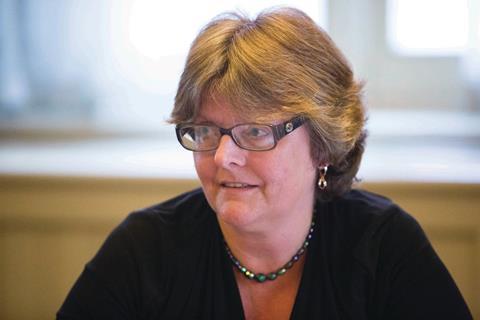
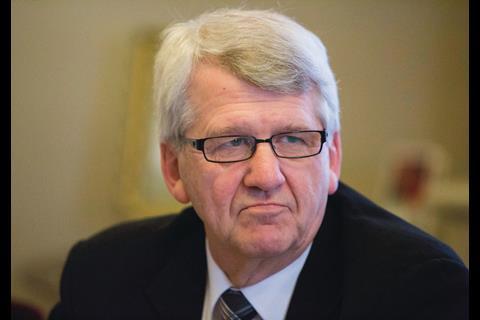

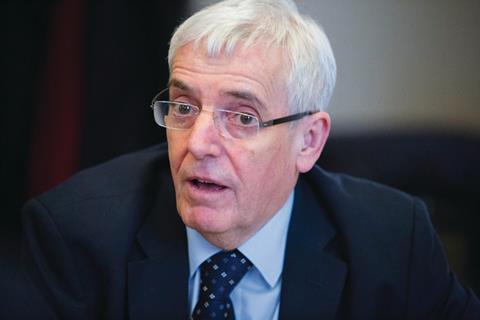

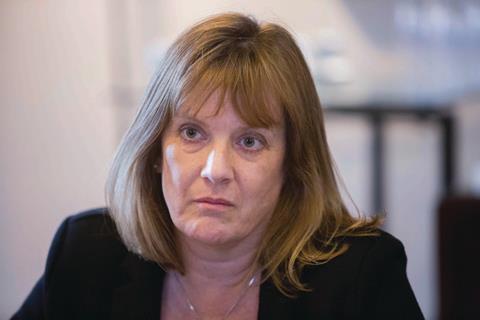
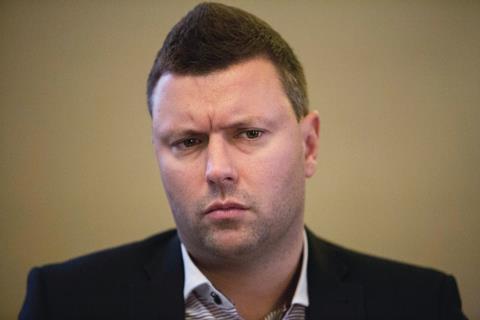
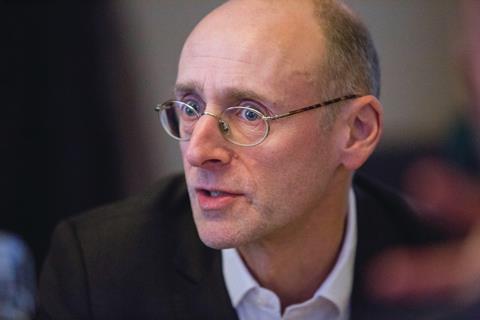

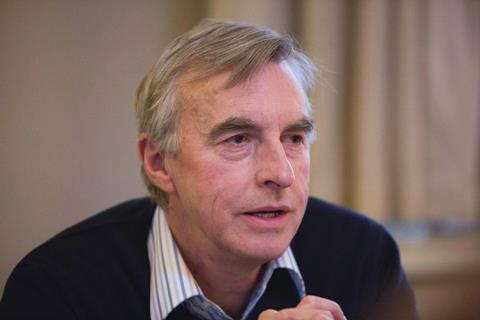
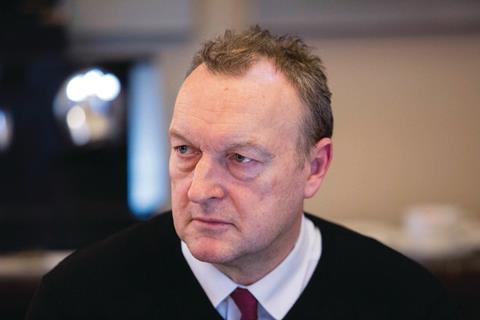
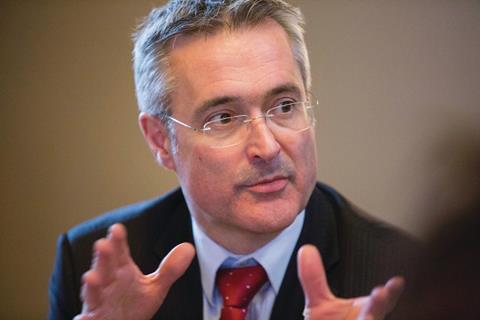
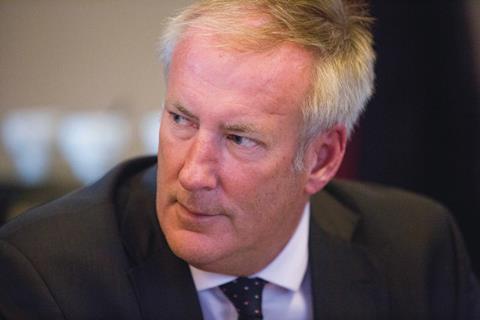
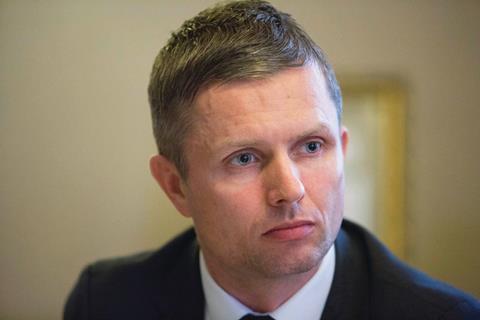






No comments yet